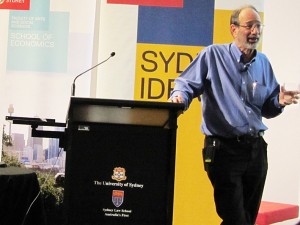Here's a story in the Wisconsin State Journal:
Access to liver transplants unequal in Wisconsin, nation . (Link to a liver calculator at bottom, by transplant center, etc.)
"Access to liver transplants varies in Wisconsin and around the country, with relatively healthy patients getting organs in some places while sicker patients elsewhere deteriorate or die on the waiting list.
"The geographic disparities persist even after a policy two years ago required broader access to patients most in need.
"Policymakers are proposing a more radical change: Dividing the country into four or eight districts for liver sharing instead of the 11 regions and 58 local areas used today.
"Populous states welcome the idea. It would direct livers to “patients in most urgent need, drastically reduce existing geographic disparities in access and, most importantly, save lives,” members of Congress from California, New York and other states wrote to federal officials after the proposal was released last year.
"But congressional representatives mostly from the Midwest and South said the proposal would disadvantage more rural parts of the country. “Areas with high organ donation rates would be disproportionately affected,” they wrote.
...
"Nationwide, more than 15,000 people await livers, nearly 13,000 of them in active status, meaning they could receive an organ today. About 6,700 people got liver transplants last year.
"Roughly 1,500 people die waiting for livers each year, according to the United Network for Organ Sharing, or UNOS, which runs the transplant system.
"Patients are ranked by medical urgency scores called Model for End-Stage Liver Disease, or MELD. The scores, based on three lab tests, range from 6 for least ill to 40 for gravely ill.
"The sickest patients go to the top of their local waiting lists. But where they rank depends on where they live, as demand for and supply of livers varies around the country.
"Patients getting livers in much of Indiana, Iowa, South Carolina and Tennessee typically have MELD scores of 25 or lower. In parts of California, Massachusetts and New York, the median MELD score at the time of transplant is 33 or higher.
"In Madison’s local area, the median MELD is 28.5. In Milwaukee, it’s 34. In Chicago, it’s 30.
"When the late Apple founder Steve Jobs flew from California to Tennessee for a liver transplant in 2009, he brought attention to one way patients can circumvent the system — by going to places with lower MELD scores and shorter wait times.
"To assist the vast majority of patients who don’t have private jets, Sridhar Tayur launched OrganJet in 2011. The Weston, Massachusetts, company can help people waiting for kidneys or livers get to hospitals in other states in time for transplants, said Tayur, an operations management professor at Carnegie Mellon University in Pittsburgh.
"The cost: $17,000 to $24,000 per flight. So far, about 35 people have signed up for the service but nobody has used it, Tayur said.
He’s trying to get insurance companies to cover the fee. “That would really increase demand,” he said.
...
"Opponents of broader sharing also say more time is needed to gauge the impact of a 2013 policy requiring partial sharing of livers.
The policy, called Share 35, gives livers to patients with MELD scores of 35 or higher throughout each region before local patients with lower scores get them.
A Milwaukee patient with a MELD of 36 gets priority for a Madison donor’s liver over a Madison patient with a MELD of 28, for example. Previously, the Madison patient would have received the liver.
What most irks Madison doctors is something called MELD exception points. Extra points can be given to patients with conditions such as liver cancer, who otherwise have low MELD scores.
Use of exception points varies, with some studies showing more liberal use on the coasts.
“People have gamed the system to have livers sent their way,” said Dr. Tony D’Alessandro, a transplant surgeon at UW Hospital.
Dr. Peter Stock, a transplant director at the University of California, San Francisco, said exception points “are only given if they’re truly, truly needed.”
UNOS is looking at creating a national board to review MELD exceptions, which would replace regional boards used today."
*************
You can get information about different transplant centers around the country, for patients of different ages, blood types and MELD scores using a calculator from the Scientific Registry of Transplant Recipients (SRTR)
Liver Transplant Waiting List Outcomes Tool Beta










